PREP-WORK This Dawn Anderson pattern (Jacobean Jacket - 501) comes with embroidery patterns included. No instructions or stitch diagrams, but I don't need them. I've been embroidering longer than I've been sewing. I've even done historic embroidery patterns before, like this Regency whitework and Elizabethan blackwork. The patterns consist of regularly spaced serpentine lines, with a variety of flowers depending from the curling ends. In true Jacobean fashion, there's no attempt to make it look like one plant; Jacobean flora can be more Seussian than botanical, poppies and daisies sprouting willy-nilly from the same branch. My first thought is that the swirly lines are too regular, made by computer. But then I look closer at pictures of extant jackets in museums, and I see those same very regular swirls in original Jacobean embroidery. Back then, there were embroidery guilds and houses of embroidery that produced things like this for clients, so maybe they had one person drawing the basic swirls in, the next laying the metal threads and braid, and the next adding flowers and leaves. There's a kind of formulaic chaos to many extant garments. Back to Dawn Anderson's pattern: I use tracing paper and transfer the serpentine lines to the back of the fabric, tilting the swirls to make them fit the panels. Then I hunt for embroidery thread, but alas, I gave it away when I KonMari'd my room. Blast! And of course I want it right in the middle of a pandemic, when all the stores are closed! I suppose I could order thread from Amazon, but it's bad enough that Amazon workers have to work right now; I don't want them risking their lives over cotton floss. So I ask the friend I live with, and she has a bunch of knitting yarns, leftover from old projects. Then, among my sewing threads I find a few slightly thicker threads. Together, they are enough. WHAT IS COUCHING?
("Lady Marmalade's proposition, "voulez-vous coucher avec moi ce soir" means "Will you sleep with me tonight"). For the furniture, the French say divan or canapé. Back in English, in the jargon of embroidery, couching a thread also has a laying-down-putting-together meaning: you couch Thread A when you lay it down on the fabric and hold it in place with stitches from Thread B. Thread A is the most visible thread, but you can see the stitches of Thread B. Couching is frequently used in English embroidery of the Elizabethan/Jacobean eras for attaching metal threads to fabric. Metal gets weaker every time you bend it, so you definitely don't want to pull it back and forth in and out of the fabric! Couching also works with thick threads that would get worn thin if they were continually pulled through the fabric. EMBROIDERING Since my yarns are thick and fuzzy, and my fabric is tough, I don't want to embroider through the twill. So, I'm couching the wooly threads down with another, all-purpose sewing thread. On the back side of the fabric, where I've traced my pattern with tracing paper, I do a running stitch over this pattern so I can see it on the face of the fabric. Then on the front side of the fabric, I couch the wool yarn down with all purpose thread. The start and finish of every piece of yarn is pulled to the back side of the fabric and woven through the stitches back there to tie it off. Below, some examples of the appliquéd flowers being incorporated into the embroidery. They are a quick way to add dimension, and quick is good when the project is otherwise time consuming! Speaking of dimension, here's a lovely rose, which I embroider first with chain stitches for puffiness, then over-top with satin stitches for a smooth look. While I work, Cutie-Pie comes to visit! This cute little boyo is irresistibly drawn to thread in action! I finish the sleeves, and then set the project aside to give myself a little break. I am very pleased with how this project is coming along! I think it fits my self-given prompt very well, being obviously historical in inspiration, but not perfectly historical in execution, and something I'll enjoy wearing as part of my modern dress.
As for the flowers, some are based on Dawn Anderson's pattern, but others, like the red tulip and the purple sweet pea above it, are my own design.
3 Comments
The Sister
5/1/2020 03:47:55 pm
I think the crewel pillow you did was a good foundation for building and puffing up stitches for texture and depth! This is a fun project! I especially like the pretty pink rose you made, and how you're using applique flowers as bases for other flowers; clever sister!
Reply
6/10/2023 12:15:59 pm
Back then, there were embroidery guilds and houses of embroidery that produced things like this for clients, so maybe they had one person drawing the basic swirls in. I truly appreciate your great post!
Reply
That's true... we tend to think of assembly-line-production as a modern phenomenon, courtesy of Henry Ford, perhaps, but all he did was automate the movement of the line. People before conveyor belts still slid projects from one worker to another! Needle-lace making in the 1600's was a similar situation: made in factories with many people specializing in one aspect of the production.
Reply
Leave a Reply. |
Karen Roy
Quilting, dressmaking, and history plied with the needle... Sites I EnjoyThe Quilt Index Categories
All
Archives
March 2024
|
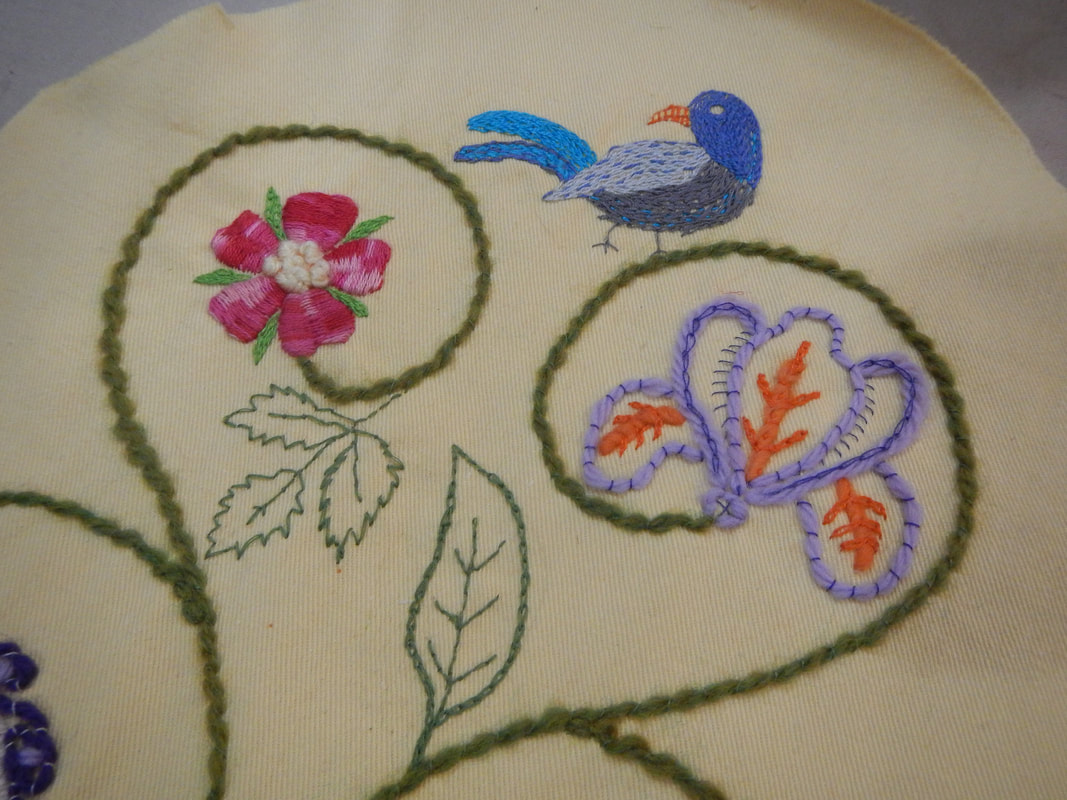
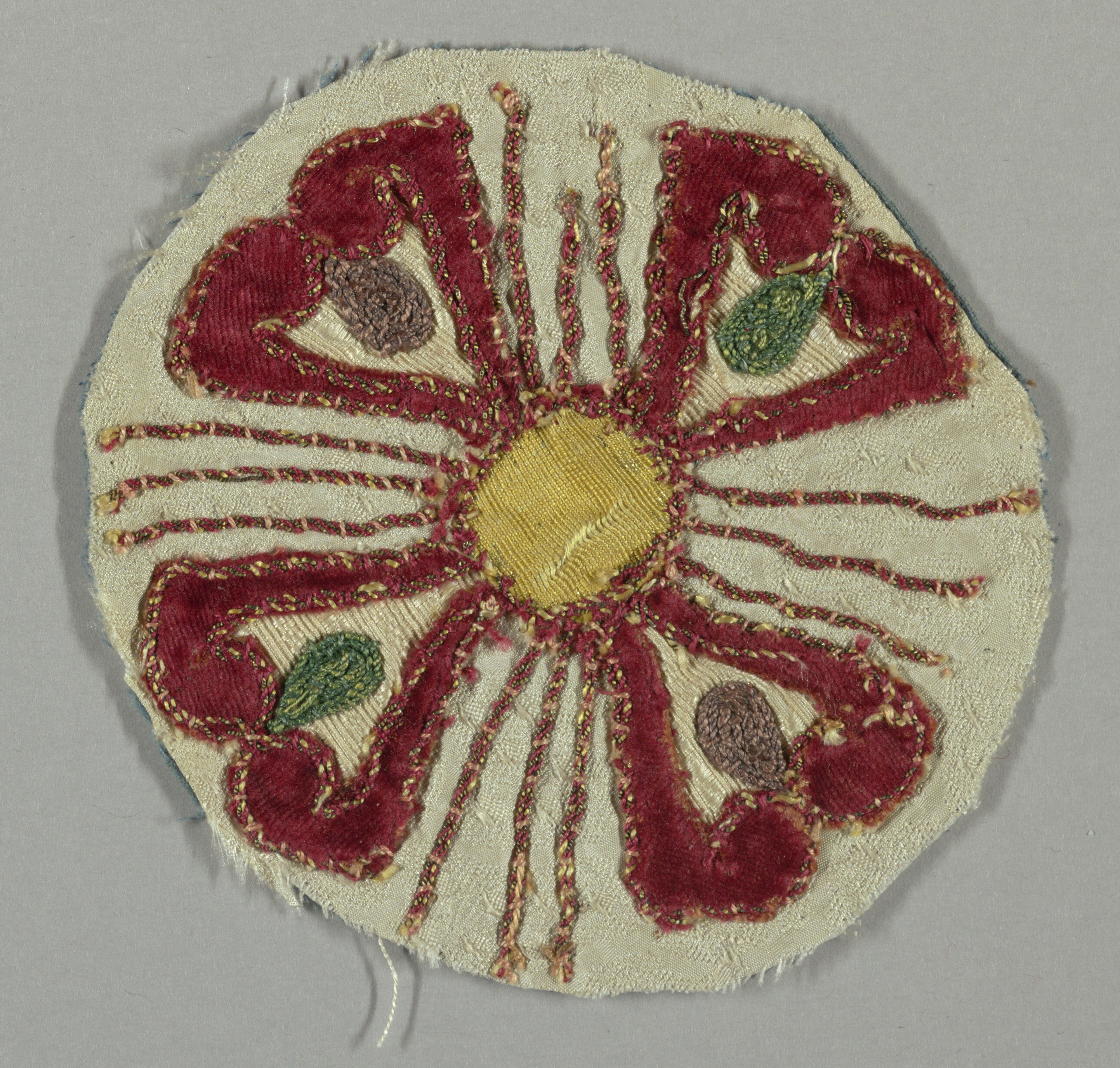
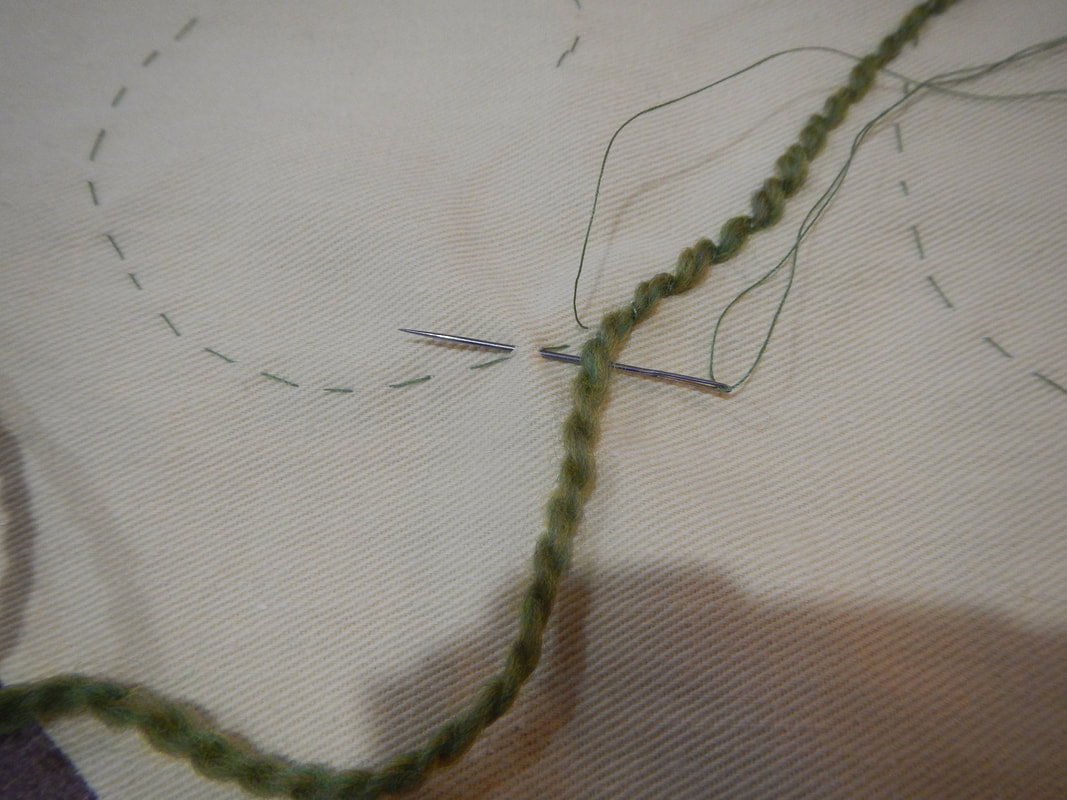
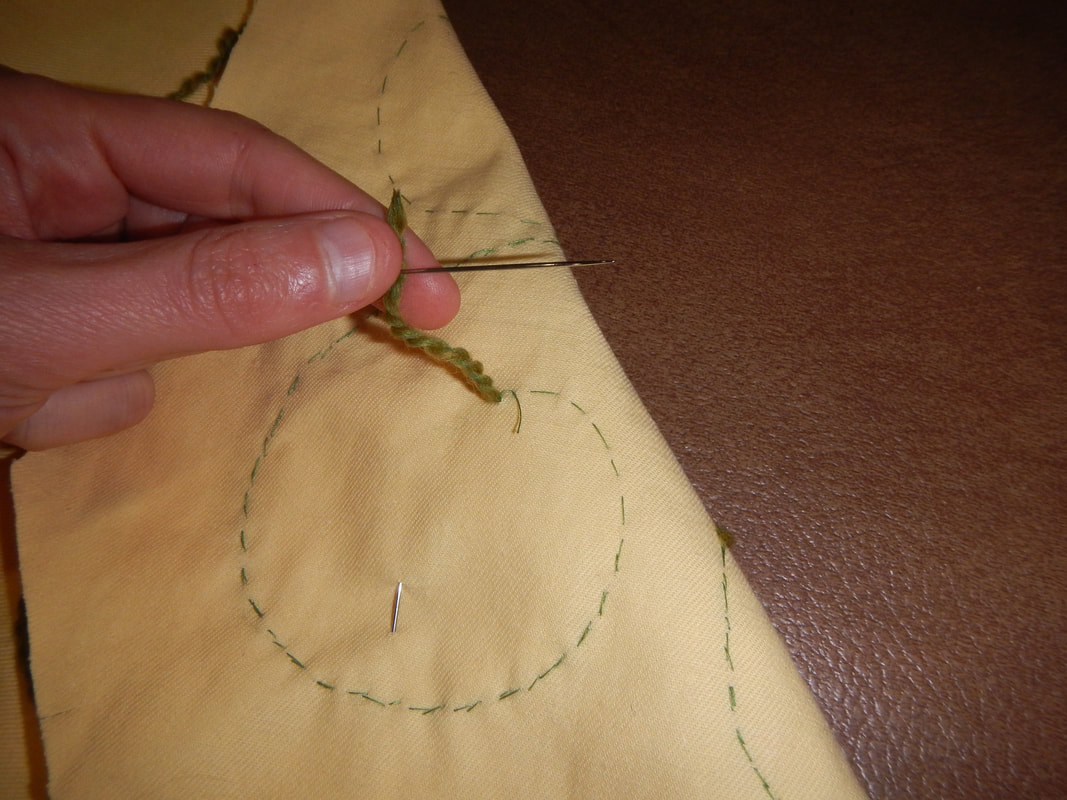
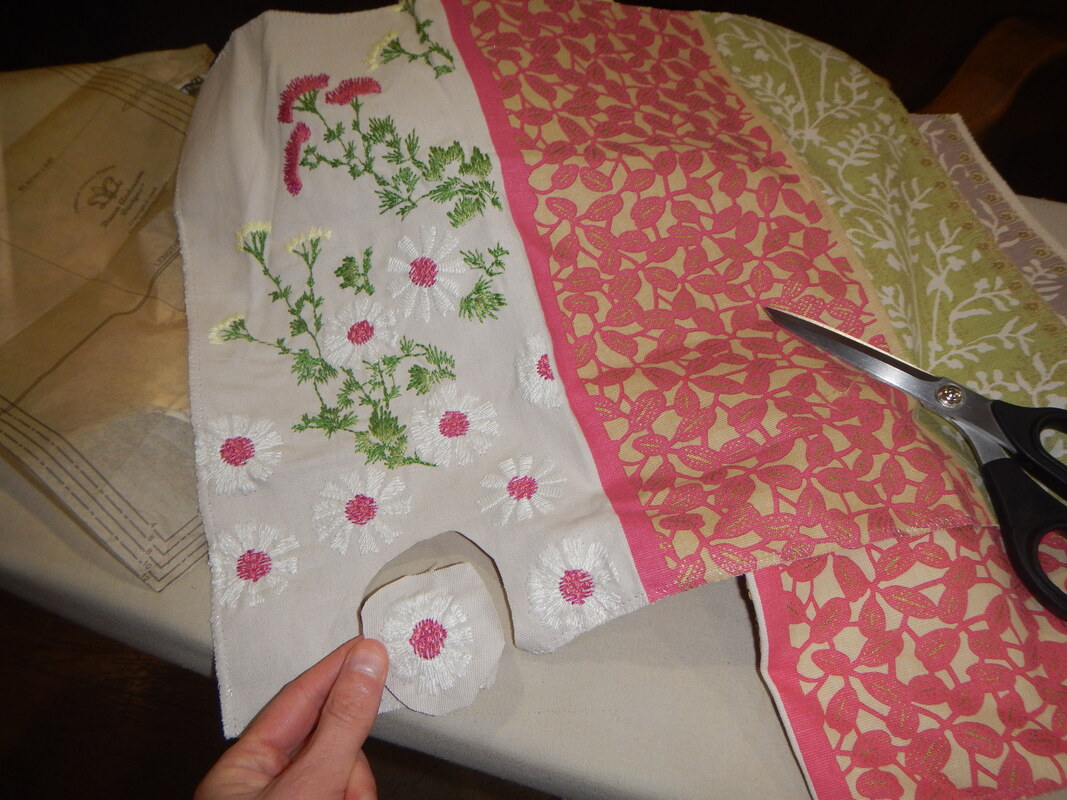
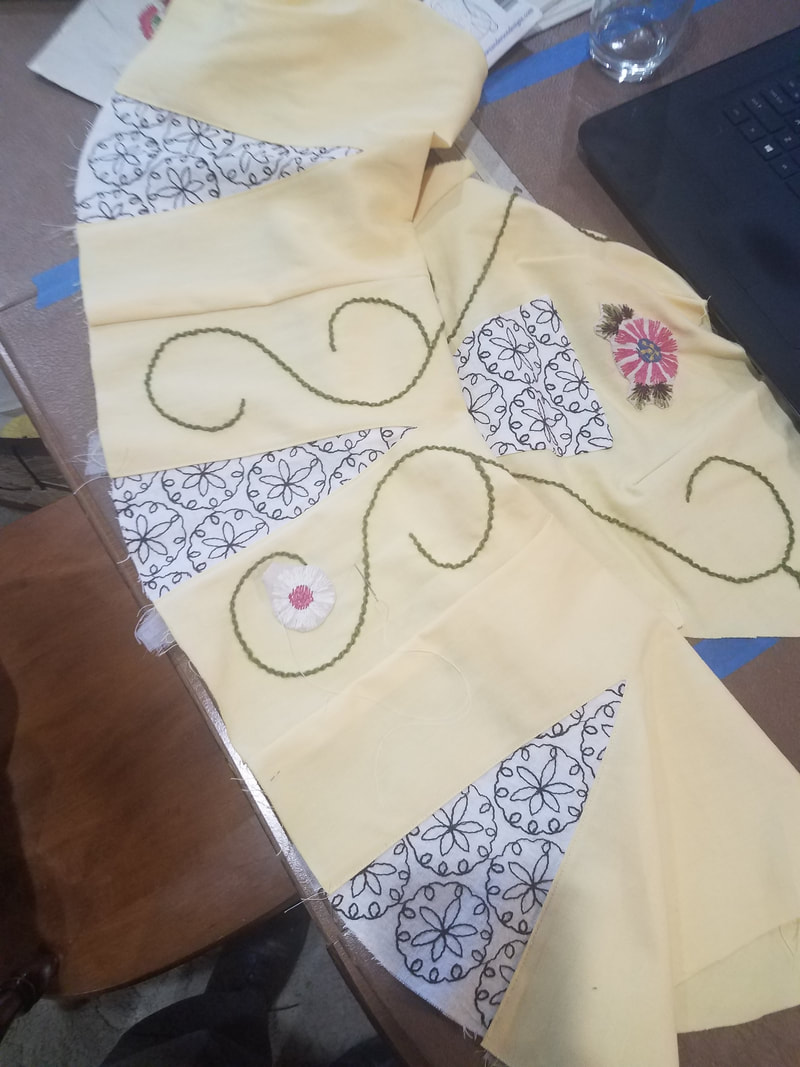

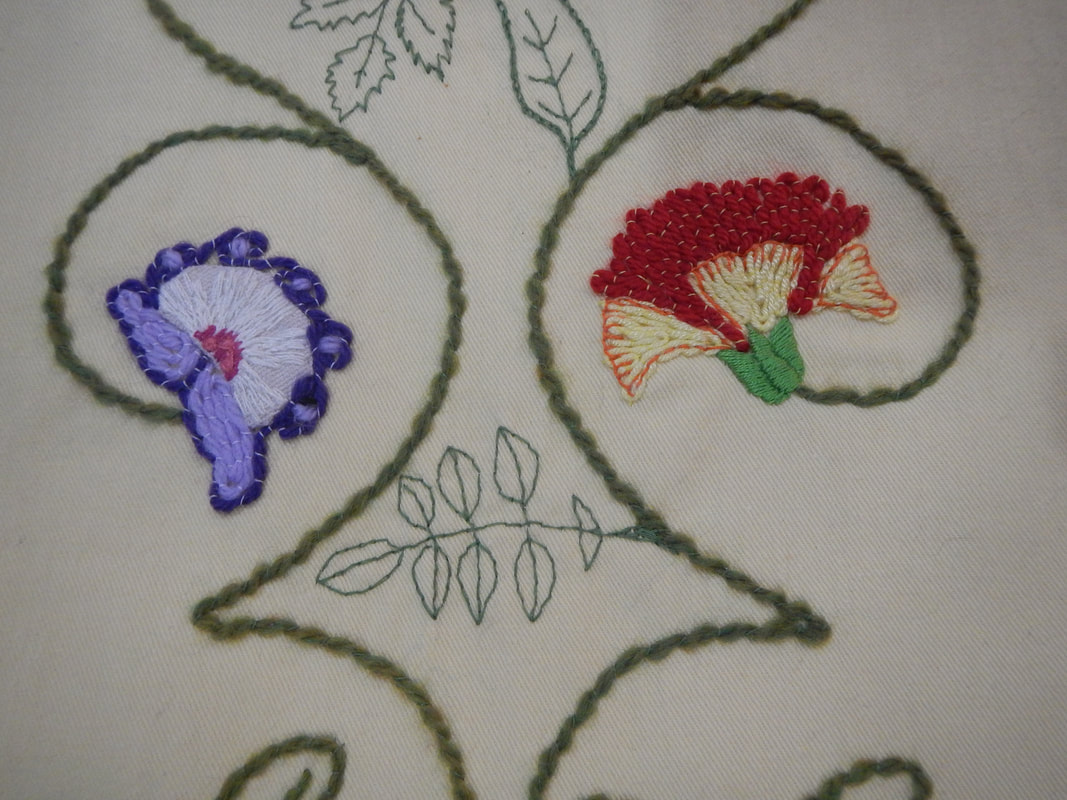
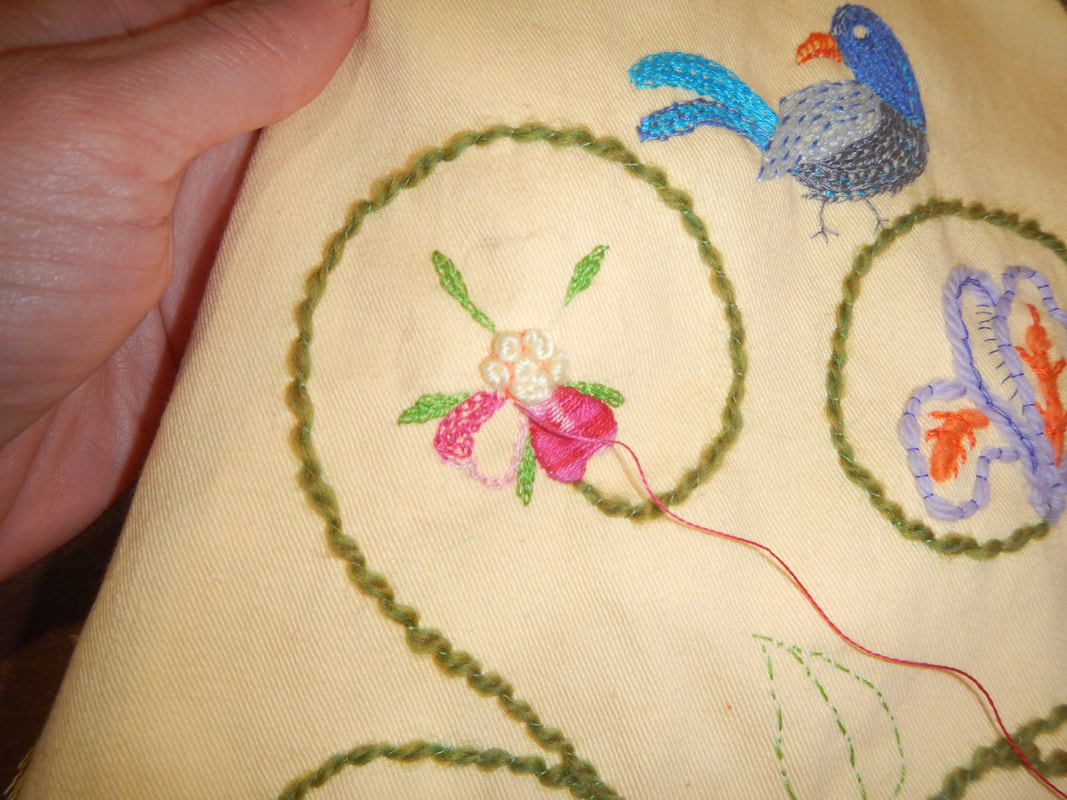
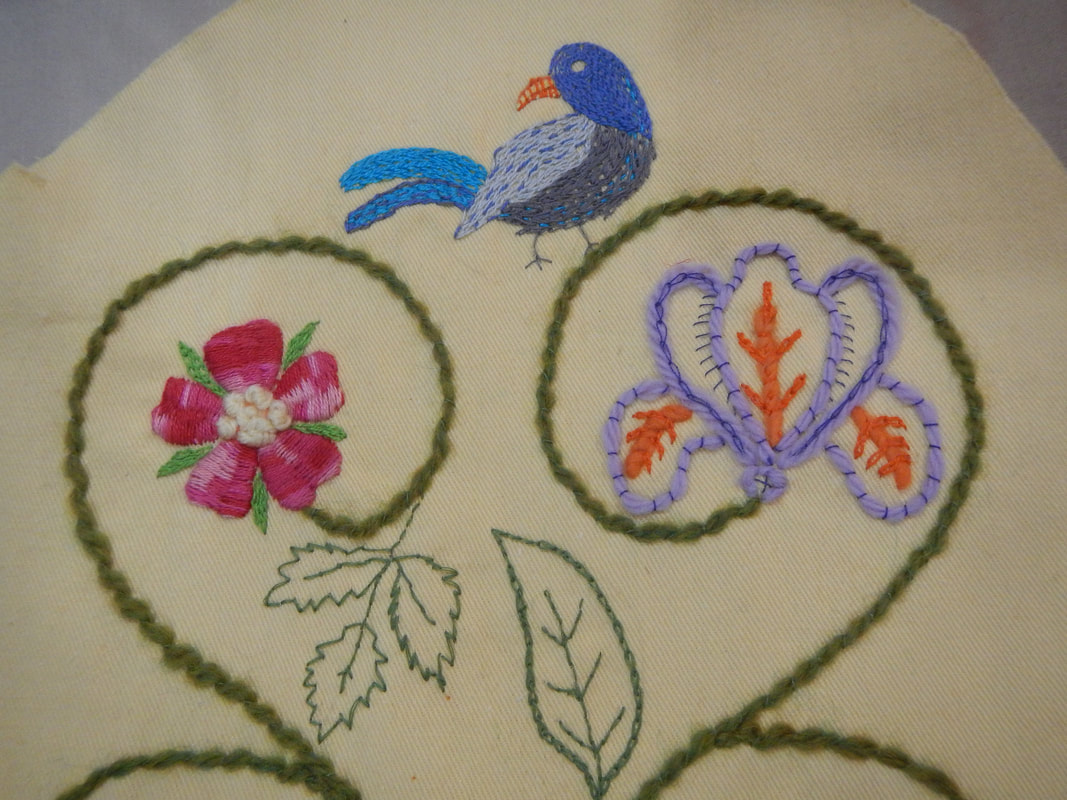
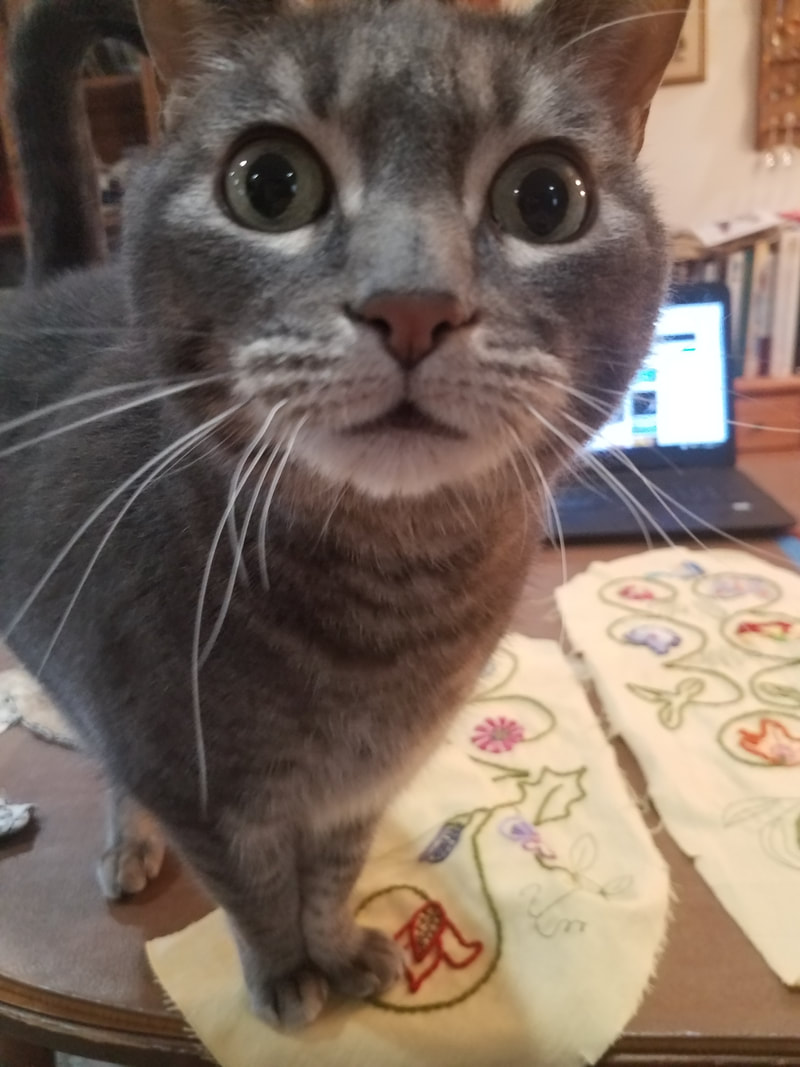
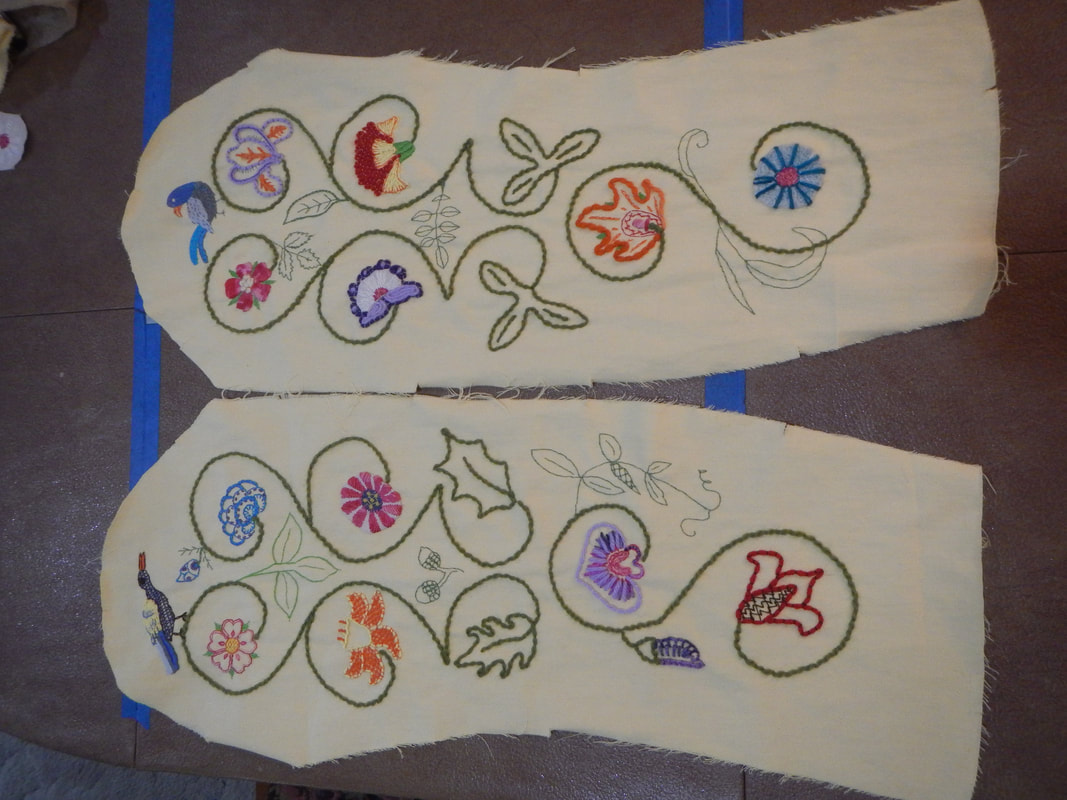
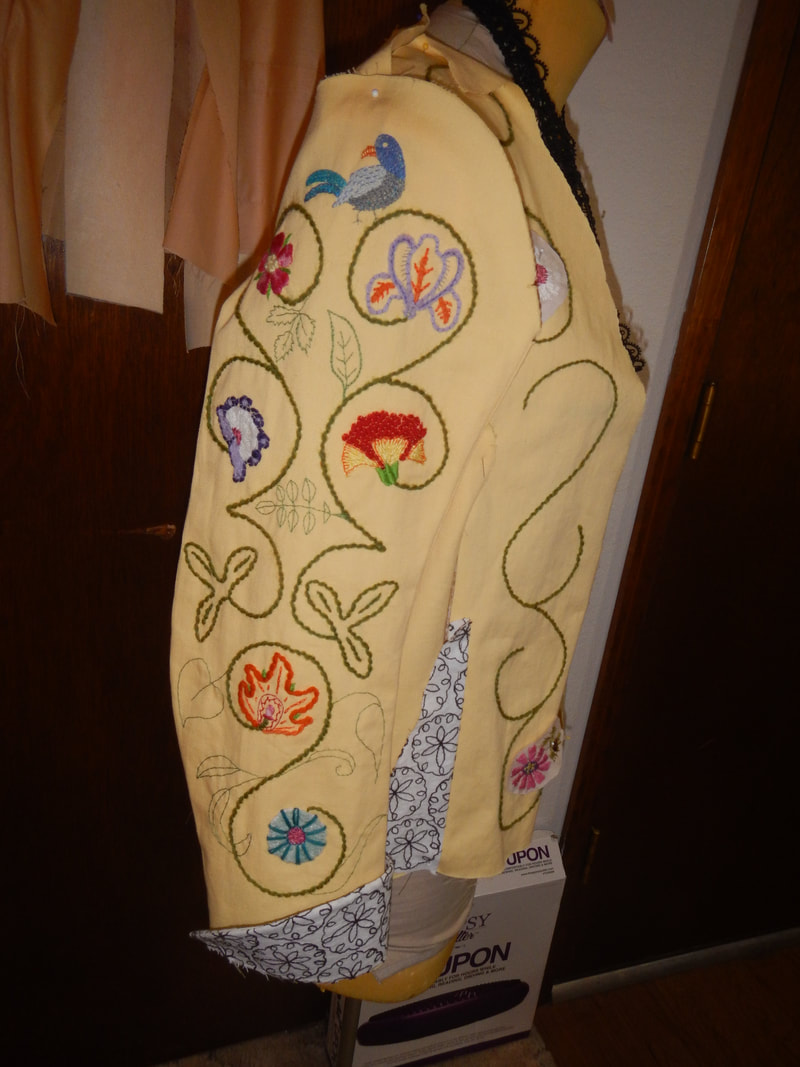
 RSS Feed
RSS Feed